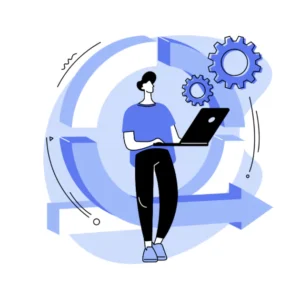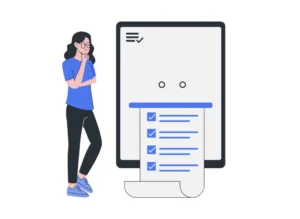Python is not merely a language but rather a great movement. Its simple syntax, openness to diversity, and reaching out to the spirit of the community have won it a great place among the world’s most beloved programming languages too. Let’s add this: a brief history of Python, the evolution of Python 2 and Python 3, and more.
Years after Python 2 and 3, another question became nothing but a burning one: what does Python 2 mean? What does Python 3 mean, and what is its difference? Let’s learn more about them.

What is Python 2?
Researches show that Python 2 is very different from Python 3 since the inception of Python 2 in 2000. It became enormous; for so many years, it was the only Python everybody knew.
- Its philosophies were simplicity and readability, yet not being perfect;
- It was also used as a backbone of early web frameworks, automation, and open-source projects in those days.
- Since it was lightweight and easy to implement, some companies went ahead and put Python 2 in their enterprise systems—especially around web development.
Python 2 ruled almost the whole of the 2000s, from big stock-startups to Google and YouTube.
What is Python 3?
Python 3, released as passionate newness in 2008, was not so much a new version as a whole assumed New Era: Unicode default, profitable modern error handling, and enhanced memory administration.
It was made with its proof of use in future techs, such as data science, AI, machine learning, and big data processing.
Python 3 broke backward compatibility on purpose; it was difficult but necessary.The year 2020 also marked the end of Python 2. The working setup running on Python 3 owns it all.
Historical Timeline of the Difference Between Python 2 and 3
To give the ultimate feeling of awareness concerning a difference between Python 2 and Python 3, a time frame must be interpreted:
- 2000: Python 2.0 rolls out.
- 2008: The community of Python is highly contentious over the introduction of Python 3.0.
- 2010–2015: Wars are fought among Python developers. Several big mouth-pieces insisted on Python 2.
- 2018: Most popular libraries opt for partial to full Python 3 only.
- January 1, 2020: Python 2 Software Development Kit is gone.
The history proves the differences between Python 2 and 3 were not just technical realities; they were social forces, and the Python community needed to embrace something.

Why the Difference Between Python 2 and 3 Still Matters
You may think, “Python 2 is gone, so why care?” Well, in fact, the reasons why the distinction between Python 2 and 3 must still be remembered for longer exist:
- Legacy projects: The world’s big businesses—banks, airlines, and governments—usually retain their old Python 2 systems.
- Migration projects: Companies hire developers to transit from Python 2 systems to Python 3, hence knowing both will be necessary for them.
- Clarity of learning: Some older tutorials or Stack Overflow answers show off Python 2 code snippets to a na”ıve inquirer. Knowing the difference will save the resultant confusion.
For students, as well as for workers, knowing this could itself be a savior in interviews where employees may test your knowledge of Python’s quirkiest bits.
Key Difference Between Python 2 and 3
Now let’s break down the difference between Python 2 and 3 in detail.
Print Statement vs Print Function
Python 2 used print “Hello”. Python 3 demands print(“Hello”). The change makes print a function, which aligns with consistency and extensibility.
Integer Division
In Python 2, 5/2 equals 2. In Python 3, 5/2 equals 2.5. This small but crucial difference between Python 2 and 3 removes unnecessary surprises in arithmetic.
Unicode by Default
Python 2 treats strings as ASCII. Python 3 treats strings as Unicode. In today’s emoji-filled, multi-language world, this difference between Python 2 and 3 makes Python 3 far more practical.
Iterators and Memory Efficiency
Python 3 uses iterators and generators (range, map, zip) to save memory. This difference between Python 2 and 3 makes Python 3 ideal for big data and AI projects.
Error Handling
Python 2: except IOError, e:
Python 3: except IOError as e:
The new syntax is cleaner and fits Python’s readability philosophy.
Library Ecosystem
Libraries are the soul of Python. By 2018, nearly all major libraries dropped Python 2 support. This difference between Python 2 and 3 means that if you want to use TensorFlow, Pandas, or Django, Python 3 is the only option.
F-Strings and Modern Features
Python 3 introduces f-strings (f”Hello {name}”), type hints, async programming, and better performance. None of these exist in Python 2, showing the forward leap in design.
Python 2 vs Python 3: Quick Comparison Table
| Feature | Python 2 | Python 3 |
| print “Hello” | print(“Hello”) | |
| Division | 5/2 = 2 | 5/2 = 2.5 |
| Strings | ASCII | Unicode |
| Range | Returns list | Returns generator |
| Error handling | except IOError, e | except IOError as e |
| Library support | Outdated | Full support |
| Speed | Slightly faster in small scripts | Optimized for modern workloads |
| Community | Discontinued | Growing and active |
Migration: The Pain Behind the Difference Between Python 2 and 3
The migration was not smooth, and the differences between Python 2 and 3 did bring a lot of headaches in migration:
- Companies had to rewrite a huge amount of code.
- Some projects made their code still run on two versions for quite a number of years.
- Tools like 2to3 were made for a lot of automated conversions but also required human review.
This story of migration teaches us why backward compatibility is a hot topic in the realm of software engineering.
How the Difference Between Python 2 and 3 Shapes Careers
For students: The difference between Python 2 and 3 will be a spark in the dark. You will be led through your debugging of retro resources and win Google-scale interviews.
For experts: It broadens your scope of maintaining or migrating legacy systems, making it a desirable asset in companies with large tech debt.
For researchers: Unicode and efficiency in Python 3 make Python essential in facing the big data challenges, multilinguistic preferences, and scientific research.

The Future Beyond Difference in Python 2 and 3
With the death of Python 2, Python 3 kept evolving. This language is evolving with features like pattern matching, async I/O, and performance optimizations. The differences between Python 2 and 3 set the foundations for Python’s survival in an AI-driven world.
Case Study: The YouTube Switch
YouTube, originally built on Python 2, had to migrate millions of lines of code to Python 3. It was a multiyear process with massive resource allocation, but it offered the prospect of enhanced performance and scalability. This, surely, is the most-publicized case study of the show-down between Python 2 and 3.
Also Read:
- Type Casting in Python: A Must-Have Skill in 2025
- Inheritance in Python: The Powerful 7 Steps Guide
- History of Python Programming Language, Evolution and Applications
- 10 Key Insights About What is Python Memory Management: A Powerful Deep Dive
Master DSA with Python at PW Skills
After you know the differences between Python 2 and 3, the next step is to use your Python 3 knowledge on solving real-world problems. PW Skills offers an in-depth Data Structures and Algorithms with Python course that promises mastery through coding challenges, projects, and step-by-step instructions.
Whether to prepare for placements and job interviews or to update skills for any professional, the course instills a problem-solving mindset expected by the world’s top companies.
Definitely yes. Python 2 has no more lifespan since 2020. No more version updates and security were provided. You can, but rather learn Python 3. Know the differences between Python 2 and 3 to adjust wherever necessary. Many libraries initially did not work with Python 3, so migrating to it was an expensive process. Although not a requirement, knowledge of how to navigate different constructs between Python 2 and 3 might help when dealing with legacy systems.Difference between Python 2 and 3 FAQs
Has Python 2 reached the point of being completely obsolete?
Is it possible to learn Python 2 for legacy systems?
What was the initial hesitation of the developers towards Python 3?
Does exposure to Python 2 still have any job significance today?
